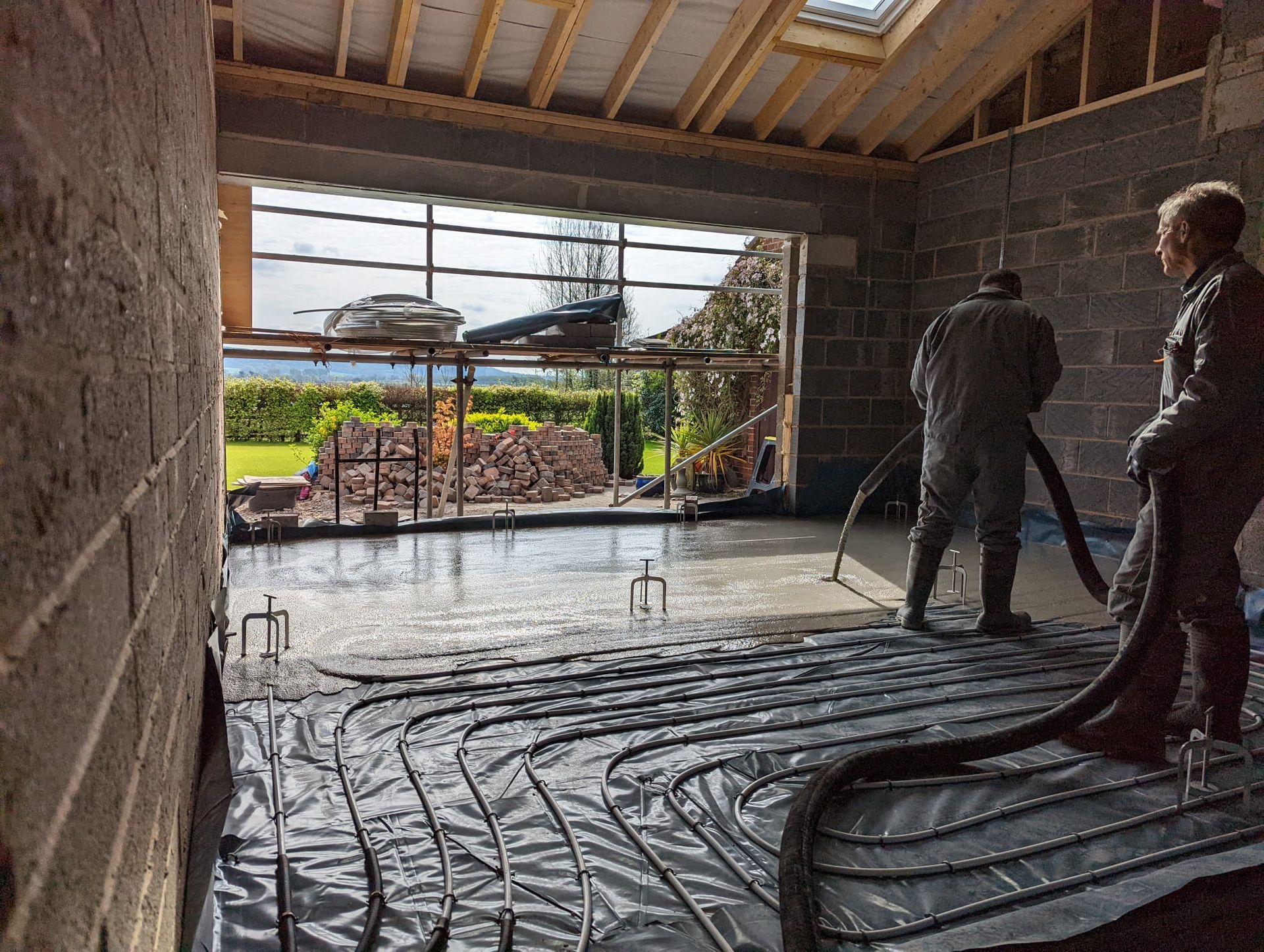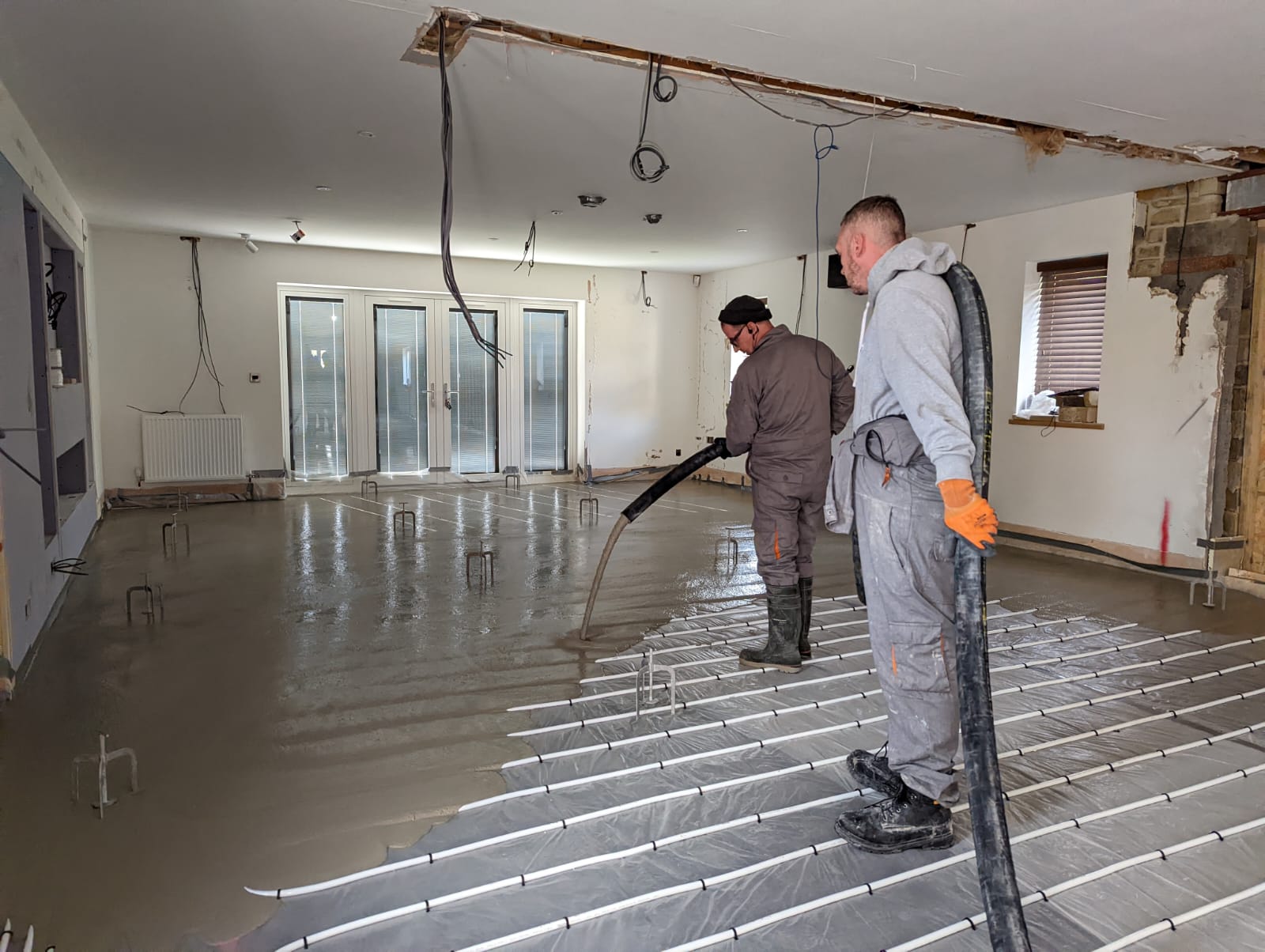Poured insulation for underfloor heating
Poured insulation for underfloor heating is a growing service in the construction sector. The insulation of commercial and residential buildings is a key topic that doesn’t show signs of abating any time soon.
With rising energy costs high on the agenda and increasing concerns around the eco crisis, insulating buildings is more important than ever. Underfloor heating is seen as an ideal solution to these issues as it is 15-20% more efficient than traditional heating systems.
Poured insulation improves the performance of your underfloor heating. It prevents heat from escaping and allows the underfloor heating system to operate at lower flow temperatures. This benefits the environment and your bottom line.

Advantages of poured insulation for underfloor heating
Poured insulation is the ideal partner for underfloor heating systems. Poured insulation is an ultra-low weight product with a density as low as 130kg/m³. It is also environmentally friendly because of its low cement composition which produces minimal CO² levels.
A major advantage of poured insulation for underfloor heating systems is its short drying time. Poured insulation can dry as fast as 1cm a day which allows other trades to continue with the project quickly.
Poured insulation - a modern alternative to traditional insulating boards
Poured insulation is an increasingly popular alternative to traditional insulation boards. Insulation boards have previously been seen as the answer to preventing heat from escaping downwards from a room towards the subfloor.
The arrival of poured insulation introduced a new way of working for the construction sector.
Poured insulation vs insulation boards
Although poured insulation and insulation boards both do the job of insulating buildings, they are very different.
Subfloors are rarely completely level which means that it can be difficult to keep boards that are laid on them well supported and even. In some cases, the boards need to be cut to size and installed to accommodate first-fix pipework which is time consuming and a waste of material.
Poured insulation is simply poured onto the subfloor and its self-levelling properties produce a smooth, level finish.

Generally, the installation of insulation boards takes a team a lot of time to install, whereas 1000m² of poured insulation can be applied in a day. There also needs to be a space on site to store the boards dry, flat and above ground level away from sunlight, whereas poured insulation doesn’t need to be stored.
The non-uniform nature of insulation boards can cause gaps whereas poured insulation leaves no gaps or bubbles. Poured insulation also produces zero waste while the installation of insulation boards leaves non-recyclable waste that needs to be collected and disposed of.
FAQS
How much liquid floor screed can you lay in a day?
Over 1000m² of liquid floor screed can be applied in a day.
How thinly can your liquid floor screed be laid?
Our liquid floor screed can be laid as thinly as 25mm.
How does liquid floor screed help the performance of an underfloor heating system?
The ultra-thin application of liquid floor screed allows the heat to spread easily, evenly and
responsively throughout a room.
Do you provide your service in the Cheshire area?
As a local
Cheshire supplier we also know the area well and can be responsive to your needs.
We are expert floor screed installers
Clockwork Screed are expert floor screed installers, supplying floor screed and poured insulation to construction sites across the North West.
We source and deliver your floor screed and floor insulation, and then a single team installs it on site using our dedicated mobile screed factories. We batch produce the exact amount of screed needed for each project so there is no waste.
For more information about Clockwork Screed services, get in touch using our
online form or by calling 0161 546 6945.







